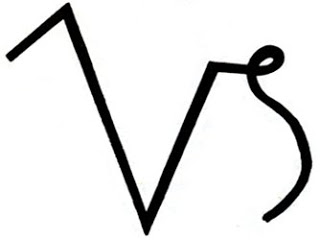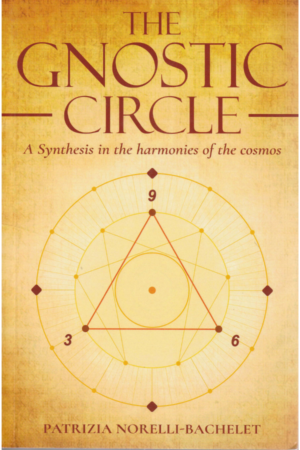In the Puranic Cosmology Mt Meru is the centre of the universe, which was not confined to material creation alone. It embraced subtle planes or dimensions primarily, lokas, since there were no empirical means to draw those planes onto and into the physical. Thus, the old cosmology was largely metaphoric, if you will. This fact alone makes it difficult to apply to it the term science. It has to be taken as a great symbol – but in my view it was a vision that transcended time and space.
The perspective was largely vertical: the subtle universe held to the axis that Mt Meru provided. Continental, geographical India may be identified in the Puranic vision as the continent at the centre of the perspective, but the way the vision has been formulated and as it has reached us today, its symbolism is its principal value.I would add something more which I believe has not been appreciated to date. Given the exercise of updating that has already taken place, Puranic Cosmology continues to be largely metaphorical, but at the same time it is prophetic in that its structure and the various components of the Symbol have been materialised today. Therefore, by this largely unappreciated quality, that great Symbol is in the act of becoming physical before our very eyes.
What was a postulation or an hypothesis in the Puranic Cosmology has become concretised in physical/geographical terms. This was not possible in the old cosmology, whereas it is the distinguishing feature of the new.I refer primarily to the temporal component of cosmology. In former times, before science had progressed to where it now stands and tools had been provided for this updating, even the Puranic flow of the Ages has to be understood as a symbol. When compared to the new cosmology it does not provide the distinguishing feature of our updated version: applicability.In this light we see a certain previsionary aspect to the Puranic model by a ‘densification’ of its symbolic postulation.
The ‘worlds’ of the Puranic when the Vedic Age had passed were subtle dimensions or occult planes of consciousness-being. On the other hand, the ‘worlds’ of the Veda, as in the Hymn quoted in Update 4 (RV, II. 24. 5.), cannot be said to be of a dimension in any way removed from the physicality of our Earth and its measurability. To render those ‘worlds’ material – or of our Earth earthly – the Rishis used the same ‘science’ we use for updating the Puranic Cosmology. It is the Science of Time. And the single factor that makes measurable the subtle nature of things temporal is the very essence and focus of the Veda – the Year.The Vedic Sacrifice unfolds on the backdrop of the Year, this none can dispute. That unfolding is what the Hymn describes: ‘…without effort one world moves into another’. And even more explicitly it is stated that entry into those ‘worlds’ is through the months and the years.
Further, there is a reason why the Rishi mentions specifically months and years only, a point that can easily be overlooked. In discovering the Rishi’s intent we learn that the Sacrificial Year was both the annual rotation of the Earth around the Sun, producing our 12 months of the year; and the larger ‘year’ with its cycles due to the Precession of the Equinoxes, composed of 25,920 years. The Rishi is explicit – annual and precessional. However, we do not recognise the reference perhaps because it is too simply put and ‘uncluttered’. Or else, if we assume a priori that the Rig Veda has no ‘science’ and that it represents a primitive society, then naturally these simple, straight forward declarations pass entirely undetected. And there are many spread throughout the Hymns.Thus Time, elusive as it is, was the altar of the Sacrifice, hence only vedi were required of precise geometric forms which could reproduce the ecliptic as backdrop/altar; and if we can further ‘materialise’ Time in this updating exercise, we bring ‘heaven’ down to Earth just as the individual realiser had done in that far-off Age. To reach this ‘kingdom’ we do not disregard or dismiss the component of Reality in this universal manifestation that can allow us to pass into and through those ‘worlds’ – i.e., the Soul; rather, we embrace the core-essence of life on Earth where the Soul serves precisely as the nexus between Time and Space, – indeed, our vahana.1
Tradition holds that Time played a very important part in Puranic Cosmology. But its role was, I repeat again, almost entirely symbolic. It was utilised to illustrate the higher Cosmic Order of the universe as seen from Earth. However, that Order was not given a ‘body’ as it were, that could serve to materialise the Ideal, to bring it down from that subtle sphere and implant it here on Earth. For example, we are all familiar with the four Yugas of Puranic lore: Satya, Treta, Dwapara and Kali, which are given very precise figures. It is believed that we are in the Kaliyuga which is said to consist of 432,000 years, barely some 5000 of which have passed, leaving more or less 420,000 ahead!
The truth be told, if indeed Kaliyuga is synonymous with darkness and ignorance, we might be justified in seeking some form of escape from a seemingly endless entanglement with this darkness. In such a scenario, if it were indeed true, escape from this universal manifestation would be entirely justified, just as the Deluder suggested.If we refuse to succumb to the ‘ruse’, we attempt to cover up this incongruence by claiming that the figures for the Yugas should be read differently, as divine not human years. But such mental acrobatics are not acceptable. We are nailed to the Kaliyuga cross and the figure 432,000 regardless of how we try to fit it into our contemporary exigencies.Clearly a cycle of hundreds of thousands of years is not realistic, nor does it tally with the practical and pragmatic nature of Indian spirituality, particularly of the Vedic Age and early Puranic period. Therefore, it must be part of a symbolic representation, as indeed it was: the Yugas of the Puranas convey a sense of Order but not applicability.
They were never intended to be factual, as we demand today. Analysts of the last century have examined the Puranic Cosmology with a contemporary bias and have consequently missed the forest for the trees. To apply our temporal experience to the Yugas is to do great injustice to the seers whose intention was entirely in keeping with what was possible at that time, but with, I repeat, a prophetic component included. It was the same as the fourfold arrangement of the Chaturvarna; and both the Yugas and the caste divisions were taken from the same cosmic structure. We will deal with the latter further on.Mt Meru was truly the heart of that Order – ‘heavenly’ in nature, not Earthly. In the new cosmology these patterns are brought to Earth in both Time and Space and measurable today. They are no longer symbolic, as we understand the word – i.e., representing or standing for ‘something else’. It is rather a question of ‘the symbol being the thing symbolised’. To do so we may use the Capricorn hieroglyph, ruler of the subcontinent, as an illustration.
Here is the hieroglyph that has been a part of the Ancient Mysteries from time immemorial, uninterruptedly until today. Given its antiquity, are we not justified therefore in seeing this element as the legitimate ‘thread’ linking us to the ancient past? Notwithstanding the belief held by some Sanskritists and Indologists that it was a Babylonian formulation and was imported into India by the Greeks along with the other symbols that comprise the 12-part zodiac as we know it today, the Rig Veda proves otherwise; and we all agree it was penned long before the Greeks arrived in India. This will be the topic of Update 7 and need not detain us for the moment. What is of interest at this point is to see just how the Mountain 10th sign/month can be LOCATED on Earth, by which means the hieroglyph itself becomes a means to materialise the Symbol, to divest it of a ‘heavenly’ or ‘otherworldly’ significance, to actualise the symbol. We give a spatial ‘body’ to Capricorn which appears to have been known in a very ancient past but was then forgotten or rendered otherworldly; to such a degree that in the Puranic Age, when the goal of the Sacrifice became the Beyond, Mt Meru continued to stand for centrality and Bharat, but could do so only symbolically. Was this a part of the ‘ruse of the Supreme’, the magic of the great Deluder himself?
What is certain is that this direction beyond was POST-Vedic. Meru would have been an axis holding to itself in a vertical line the universe from subtle to dense. But Time gave it applicability then as it does today, always hinging on the 10th Month Victory, the supreme goal of the Warrior/Initiate. Time and Space converge when the symbol becomes the thing symbolised.
1. The very advanced ‘science’ the Rishis employed in the construction of their vedi to allow them to BE that ecliptic, not merely a symbolic reproduction, has been reproduced in an enhanced form by the Mother of the Sri Aurobindo Ashram in Pondicherry. See www.matacom.com for a complete presentation of this revolutionary ‘science’; but again updated to suit the times.




